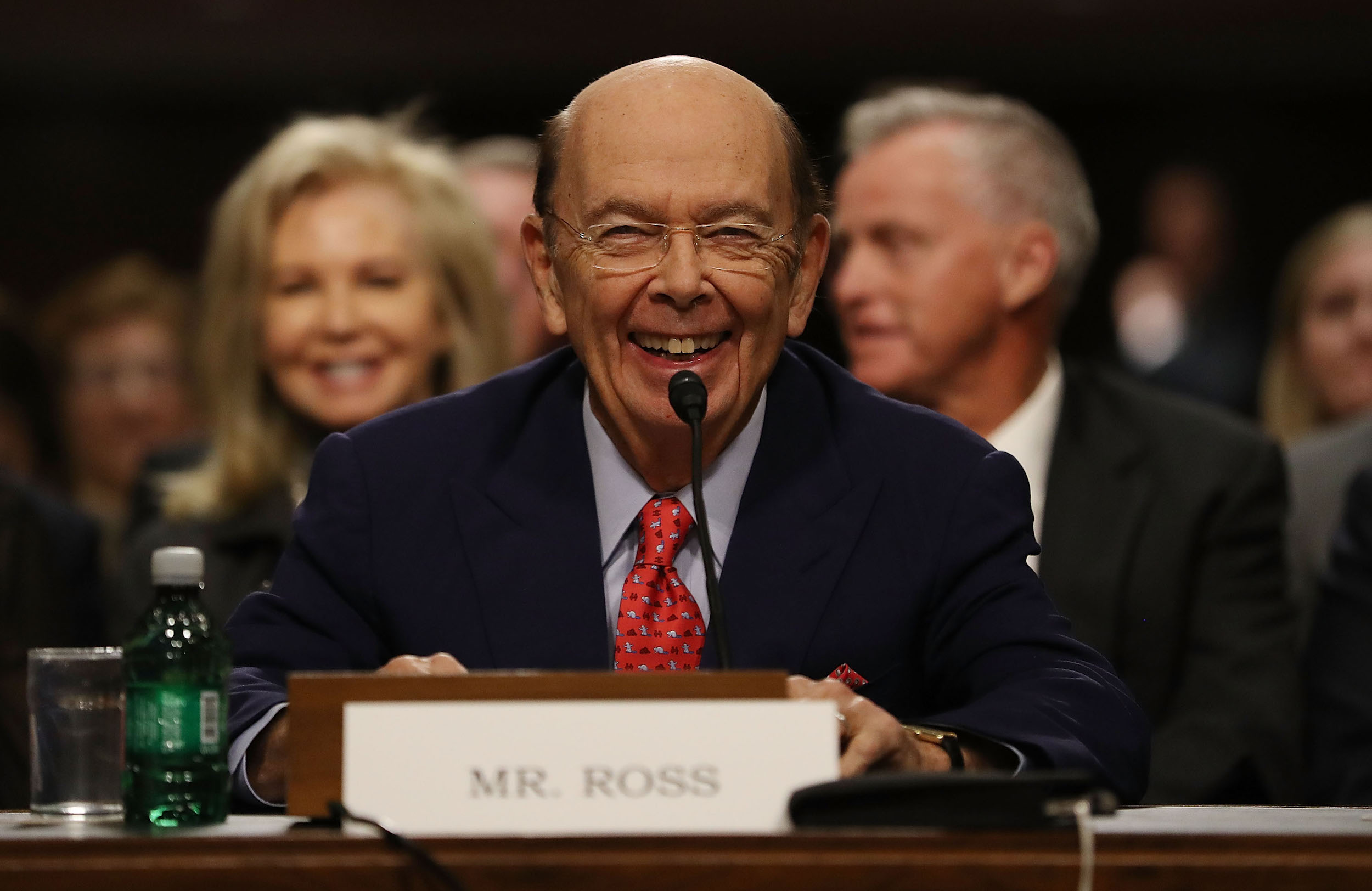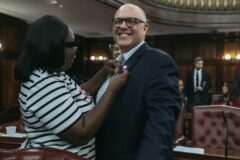It’s not surprising that Merriam Webster named “surreal” its word of 2016, the most maddening time in recent memory. According to the official dictionary of record, searches for the definition of “surreal” spiked several times throughout last year, with the strongest surge coming after Donald Trump’s electoral victory in early November.
As defined by its founder Andre Breton in his 1924, Surrealist Manifesto, “surrealism” describes thought processes that happen “in the absence of any control exercised by reason, exempt from any aesthetic or moral concern.” As curious Googlers came to realize, that feels like an accurate summation of how it felt to watch Donald Trump be elected president–and in Wilbur Ross, the president-elect’s pick for Secretary of Commerce, Trump may have found his foremost practitioner, and purchaser, of surrealism.
Ross—a collector of surrealist art, especially the Belgian painter René Magritte—is a depressingly telling choice for Commerce Secretary. He has primarily made his billions through swooping in to leverage distressed companies, a practice made most famous by Mitt Romney’s Bain Capital. But where Bain invested in companies like Domino’s and Duane Reade, Ross has a history of raiding businesses in industries that Trump has promised to bring back, or keep, in the U.S.—textiles, steel and coal, most prominently.
“If you deal a lot with distressed companies, surrealism is a natural thing for you to collect, because distressed companies are in their own surrealistic world,” Ross, who looks a bit like popcorn magnate Orville Redenbacher, told the Globe and Mail last year. “There is usually something a little bit strange, a little bit skewed or out of order.”
Like Magritte’s famous bowler hat paintings, Ross is only superficially staid. In reality, he is a radical who is deeply attracted to the “skewed,” and skilled at manipulation. One of the first distressed businesses Ross dealt with was owned by Trump, when the president-elect’s Atlantic City properties were failing in the early ‘90s. Ross stepped in, as part of
Rothschild Inc., one of the world’s largest financial advisory groups in the world (and the subject of largely anti-Semitic conspiracy theories dating back to the 18th century, which is notable in retrospect given the tenor of Trump’s campaign). Ross helped broker a deal to keep the Donald afloat, saying, quite correctly though not for reasons he knew at the time, that there was still a lot of value in the “Trump name.”
After Ross left Rothschild, he began investing in the deindustrialization of America. In 2002, he bought shuttered mills from a bankrupt steel company in Cleveland, as well as the steel mill at Sparrows Point near Baltimore, where the previous owner had already declared bankruptcy. This allowed Ross to cut costs by ignoring any of the previous owners’ economic obligations.
“That eliminates, on the part of the company, any responsibility to fund pensions,” said Bill Barry, a labor historian. Barry calls Ross a “bottom feeder.” Others would call him a “vulture capitalist.” Former steelworkers had mixed feelings. Younger workers “made more money with bonuses and stuff like that through the new employers,” Barry said. “But it was blood money.” The older workers were furious. “It was money that was taken, billion dollars a year, from the healthcare and the retirement and the pensioners,” Barry said. “They were the ones who built the union, and built the company, and they were just cast aside” for short-term gains.
[featuredStoryParallax id=”223344″ thumb=”https://static.spin.com/files/2017/01/GettyImages-605894718-1484853224-300×200.jpg”]
Ross pledged to hold on to the mill for the long term, but sold it within 18 months for over $2 billion. Ross did essentially the same thing in other fields, with the International Textile Group, for instance, and the International Coal Group (ICG), which also used bankruptcy laws to skirt unions and pension rules. One site ran by the ICG was the Sago mine in West Virginia, where 12 workers died in 2006 after an underground explosion. Federal inspectors had levied over 200 citations against the mine and the roof had caved in more than 20 times.
Ross expressed feelings of guilt. “For the rest of my life, the memory of those who died at Sago will haunt me,” he told New York magazine. In the same story, he said that Donald Trump gave $25,000 to the families of the miners. But Ross himself sold the firm a few years later along with other stripped down coal companies for more than $3 billion. Though Trump has promised to be the savior of coal miners (winning 68% of the vote in West Virginia), Ross’ adventures in steel and coal only go to show that he is a risk-taking speculator gifted at liquidation and bargain basement clear-out sales that maximize his own profit.
In order to become secretary of commerce, if confirmed, Ross agreed to divest assets and positions in over 100 companies or funds. In disclosure paperwork filed in advance of his confirmation hearing, Ross revealed assets that fell in a range between $337 million and $687 million—including what he says is a $50 million art collection—though Bloomberg estimates his net worth to be north of $2 billion.
Ross’ obsession with surrealism is also a symptom of the world from which he comes. In the book “Young Money,” author Kevin Roose describes a scene at the annual meeting of a fraternity of Wall Street billionaires called Kappa Beta Phi, where neophytes dressed in drag, billionaires joked about the financial crisis, and made homophobic and sexist jokes. The details are surreal in the worst sense, like an emergency room after midnight on New Years. Ross emceed the event, which Roose snuck into, and where at one point an investment banking CEO came to the stage in a confederate flag hat and sang a song to the tune of “Dixie.” “In Wall Street Land we’ll take our stand,” the version goes.
In 2013, Ross talked about his art with Forbes. He pointed to Magritte’s “La Parure de l’orage,” a painting that foregrounds abstract figures on a beach, placing them in front of a dire background of a dark shipwreck and sea.
“Are these refugees from the ship? Or are they standing there and watching the ship get wrecked?” Ross asked the reporter. In these moments, feeling ruined but waiting for the worst, the questions seem prescient.





